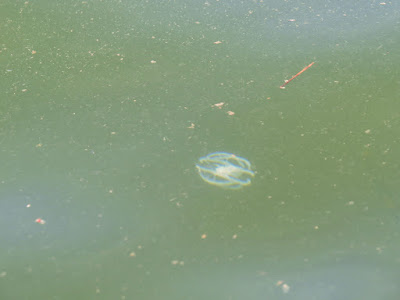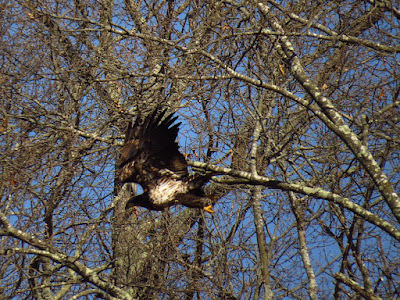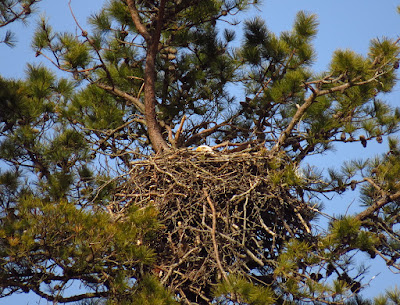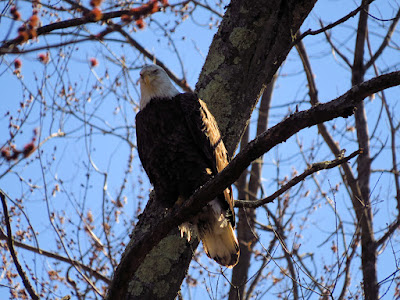I head downriver on a draining tide. It is warm, sunny and I have a light tailwind, it is easy going on 2 mph of current. I spot two Great Egrets in the first fifty yards. They have just arrived.
The tide is mostly out, so the choices for paddling in the salt marsh are limited. I paddle down Nell's channel with one eye out for bird sightings and the other watching the calved banks for artifacts. I am in the archives of the salt marsh.
 |
| Nell's Channel |
I spot a tree limb sticking out of the bank. It's about 3 inches in diameter. More to the point, it is about three feet below the top of the marsh. I figured out an estimate from dateable artifacts, mostly old bottles, that this marsh builds up at about 1 foot per 50 years. This tree limb floated down into the treeless marsh, well out from shore I must add, and got hung up in the spartina. It got silted in and every season and every year another layer of dead plant and silt built up. As that went on, the marsh settled under its own weight and the decomposition of dead marsh stuff. So, it is possible that this tree limb floated into the marsh sometime around the Civil War.
I continue out to the mouth of the river. Once in the salt water, or at least very close to it, I trade in the Canada Geese for Brandts. I move toward some distant nasal whistling, somewhere on the massive sand bar that protects the marsh. Then, the nasally whistle comes my way, and a pair of Oyster Catchers speed past.
I cross the river and head back. The weather service is spot on accurate today. The wind has swung around to my back as predicted. The tide is slowing as it reaches the low point, and I have the eddies and slack water that are near shore.
 |
| Long Tailed Ducks |
I spot eight Long Tailed Ducks. They confuse me at first and I have to scope them out to identify them. Unlike other Ducks, male Long Tails have their most brilliant colors during winter and go drab during mating and nesting. They should be migrating to the Arctic very soon and already, the males are in a weird halfway color scheme.
 |
| Red Throated Loon |
A larger bird shakes its feathers in mid stream before diving. It could be a Loon or a Cormorant and I watch for it to resurface. Loons generally dive longer and travel much farther than Cormorants. I don't spot it for a few minutes, not until I am crossing the river back to the marsh. It is a Red Throated Loon, a common springtime sighting here.
I spot at least six Osprey while heading up Nell's channel












